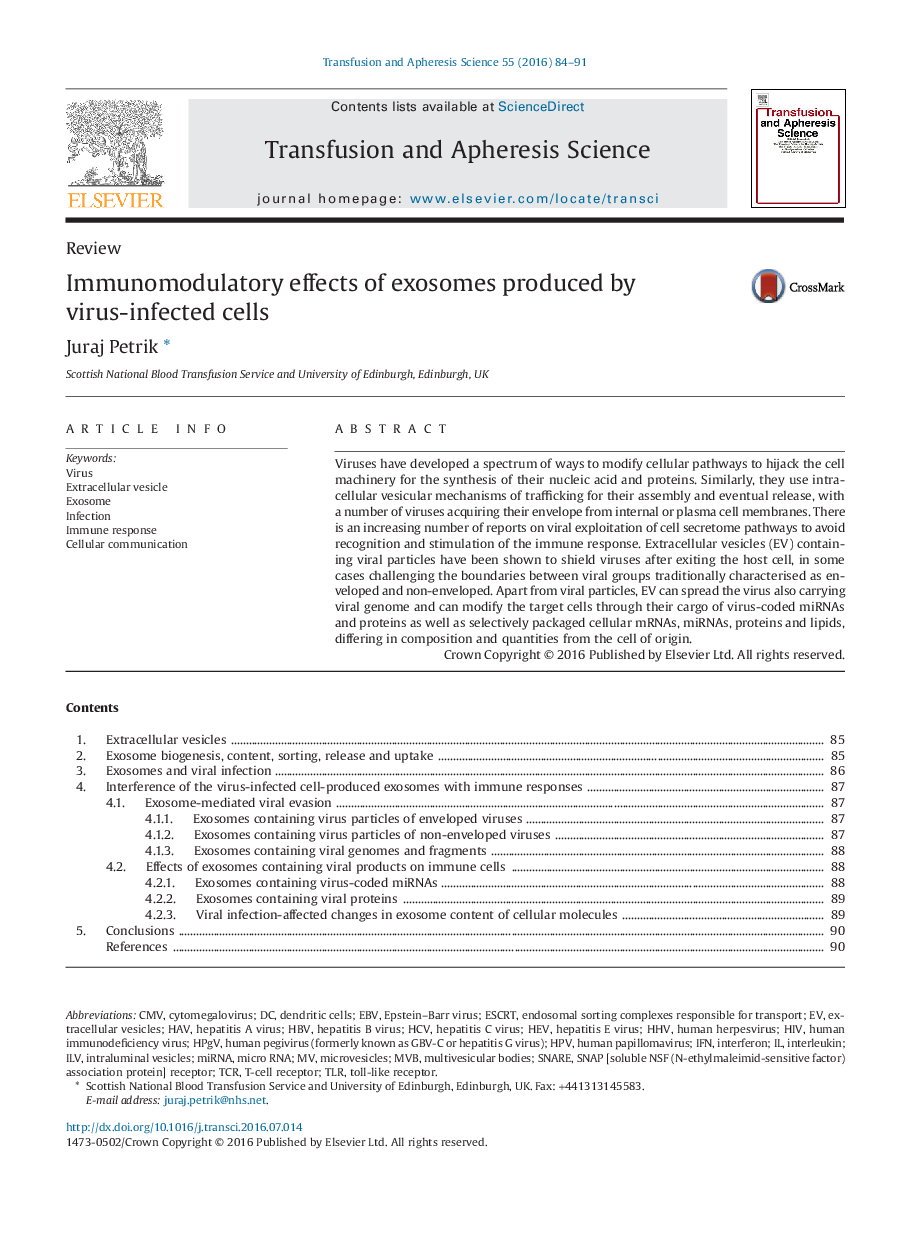| Article ID | Journal | Published Year | Pages | File Type |
|---|---|---|---|---|
| 5664604 | Transfusion and Apheresis Science | 2016 | 8 Pages |
Viruses have developed a spectrum of ways to modify cellular pathways to hijack the cell machinery for the synthesis of their nucleic acid and proteins. Similarly, they use intracellular vesicular mechanisms of trafficking for their assembly and eventual release, with a number of viruses acquiring their envelope from internal or plasma cell membranes. There is an increasing number of reports on viral exploitation of cell secretome pathways to avoid recognition and stimulation of the immune response. Extracellular vesicles (EV) containing viral particles have been shown to shield viruses after exiting the host cell, in some cases challenging the boundaries between viral groups traditionally characterised as enveloped and non-enveloped. Apart from viral particles, EV can spread the virus also carrying viral genome and can modify the target cells through their cargo of virus-coded miRNAs and proteins as well as selectively packaged cellular mRNAs, miRNAs, proteins and lipids, differing in composition and quantities from the cell of origin.
